I've looked and not been able to get my specific answer. What I'm trying to do is have a total owed cell, and an amount paid cell. I want the total owed to subtract the amount paid, and update itself to the new lesser amount, so that when I enter another amount in the same amount paid cell, it subtracts again from the previously updated amount. I've tried different formulas, but I keep ending up with a circular dependency error. Is there a way to have cells calculate in a certain order? Do cell a21 first, then do cell b21 using the updated value from a21, and so on.
Asked
Active
Viewed 294 times
2
-
You might be able to do something by turning off circular references, although I doubt it's a good idea :). Here's a [few pages of instructions by Jan Karel Pieterse](http://www.jkp-ads.com/Articles/circularreferences01.asp) – Doug Glancy Aug 17 '13 at 17:17
3 Answers
3
You will need to use a VBA script to achieve what you need.
The code will need to be in the Worksheet_Change event handler for the sheet in question.
Essentially the code should use the following logic
- Check that the cell being updated is the amount paid cell
- Recalculate the total owed
Optionaly, clear the amount paid.
Private Sub Worksheet_Change(ByVal Target As Range)
End Sub
Declan_K
- 6,726
- 2
- 19
- 30
-
Will this work in Google docs? and where could I get an example of this script? – poboy975 Aug 17 '13 at 19:14
1
An onEdit() trigger function in Google Apps Script can do this easily.

Refer to "Spreadsheet Edit Events" in Understanding Events, and Understanding Triggers.
function onEdit(e) {
// For simplicity, we'll use A1 notation to refer to cells & ranges
var cellA1Notation = e.range.getA1Notation();
// Check if a new payment was made
if (cellA1Notation == 'B2') {
// Make sure we're dealing with a number
var payment = eval(e.value.valueOf())
// Archive payment
var pastPaymentRange = e.range.getSheet().getRange('B3:C3');
pastPaymentRange.setValues([[payment,new Date()]]);
e.range.clear(); // Clear payment
// Update total payment
var totalPaymentRange= e.range.getSheet().getRange('B4');
var totalPayment = totalPaymentRange.getValue();
if (typeof totalPayment !== 'number') totalPayment = 0;
totalPayment += payment;
totalPaymentRange.setValue(totalPayment);
// Update balance
var balanceRange = e.range.getSheet().getRange('B5');
var balance = balanceRange.getValue();
if (typeof balance !== 'number') balance = 0;
balance -= payment;
balanceRange.setValue(balance);
}
}
Mogsdad
- 44,709
- 21
- 151
- 275
-
Hi, this seems to be what I'm looking for. I tried to implement it, and got a TypeError: Cannot read property "range" from undefined... this line: var cellA1Notation = e.range.getA1Notation(); Am I missing something? Though it does seem to be working correctly anyway. – poboy975 Sep 12 '13 at 03:22
-
If you got that error when running the code in the debugger, it's simply because there was no event `e` defined. Techniques for debugging trigger functions are described in [How can I test a trigger function in GAS?](http://stackoverflow.com/questions/16089041/how-can-i-test-a-trigger-function-in-gas) – Mogsdad Sep 12 '13 at 13:27
0
You can avoid scripts and circular refs by changing strategy. Add a new row every time you get in/out money. Your formulas will just add up the total as in sum(a3:a) Plus you get historical data as a bonus.
Zig Mandel
- 19,571
- 5
- 26
- 36